Are you an outdoor enthusiast and asking “what is orienteering?”? We have the best beginner guide for you to learn about this awesome outdoor hobby and how to get started!
Orienteering’s a great hobby to try and a great way to spice up your hiking trips or other fun outdoor adventures!
Orienteering is a navigational sport where participants use a detailed map and a compass to find their way through a pre-defined course.
The goal is to locate a series of control points, marked on the map, in the fastest time possible.
The sport combines mental and physical challenges and something that can be enjoyed by people of all ages and fitness levels. It is often held in diverse environments, such as forests, urban areas, or even on snow using skis.
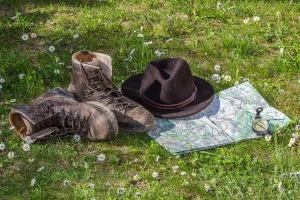
Article Content:
So, What is Orienteering?
The definition of Orienteering Per wikipedia – Orienteering is a group of sports that require navigational skills using a map and compass to navigate from point to point in diverse and usually unfamiliar terrain – while moving at the quickest speed.
Participants are given a topographical map, usually a specially prepared orienteering map, which they use to find control points. Source: Wikipedia
Okay, but what is orienteering in simple words?
Essentially, it’s a navigational race! You use a compass, map, and other useful resources to complete a predefined course.
There are several types of orienteering and each have their own unique flavor. Whether you want to go hiking, biking, or do a session at night – there’s a little bit of fun for everyone!
History of orienteering
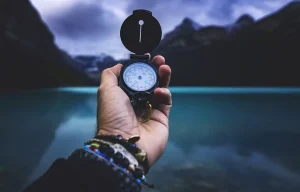
The origins of orienteering can be traced back to the late 19th century in Sweden, where it was initially used as a military training exercise. The first civilian orienteering competition took place in 1897 in Norway.
The sport gained popularity in Europe during the 20th century and eventually spread worldwide.
The International Orienteering Federation (IOF) was established in 1961, and the first World Orienteering Championships took place in 1966.
References:
Types of Orienteering
So now that we’ve explained what orienteering is, let’s go over the different types you can do – even as a beginner!
1. Foot Orienteering
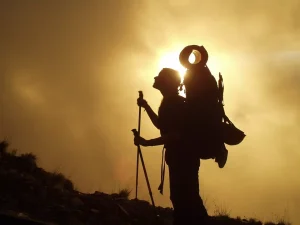
Foot orienteering is the most common and traditional form of this fun hobby and a natural place to start for beginners.
Participants navigate on foot through a course, using a map and compass to locate control points.
The terrain varies, from dense forests to open fields, and the courses can be designed for beginners or advanced participants.
Pros of Foot orienteering:
- Accessible to people of all ages and fitness levels
- Good type for beginners
- Wide variety of terrain and course difficulty
- Builds physical endurance and navigational skills
Cons of Foot orienteering:
- Can be physically demanding, especially on rough terrain
- Weather conditions can affect the experience
2. Urban Orienteering

Urban orienteering, also known as Street or Sprint orienteering, takes place in urban environments such as city centers, parks, or residential areas.
Pros of Urban Orienteering:
- Quick decision-making and accurate navigation skills development
- Shorter courses and faster-paced races
- Accessible and exciting for beginners and experienced orienteers
Cons of Urban Orienteering:
- Limited variety of terrain
- May be less challenging for advanced orienteers
3. Mountain Bike Orienteering
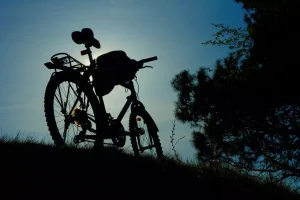
Mountain bike orienteering (MTBO) combines navigational challenges with the excitement of off-road cycling.
Pros of Mountain Bike Orienteering:
- Tests both navigational skills and off-road cycling ability
- Appeals to experienced cyclists and orienteering enthusiasts
- Physically demanding and thrilling sport
Cons of Mountain Bike Orienteering:
- Requires a higher level of fitness and cycling skill
- Limited accessibility for those without a mountain bike
4. Ski Orienteering

Ski orienteering is a winter sport that takes place on snow-covered terrain using cross-country skis.
Pros of Ski Orienteering:
- Combines physical demands of cross-country skiing with mental challenges of map reading
- Popular in countries with cold climates and snowy winters
- Unique and enjoyable winter activity
Cons of Ski Orienteering:
- Requires skiing skills and equipment
- Limited to specific geographic locations and seasons
Yes, there are a few more variations of orienteering that cater to different interests and skill levels.
5. Rogaining

Rogaining is a long-distance form of orienteering, typically conducted in teams of two to five participants.
Events last anywhere from 2 to 24 hours, and the goal is to collect as many points as possible by visiting control points spread across a large area.
Pros of Rogaining:
- Encourages teamwork and strategic decision-making
- Provides a challenging, endurance-based experience
- Allows participants to explore vast and diverse landscapes
Cons of Rogaining:
- Requires a higher level of physical fitness and navigational skills
- Can be time-consuming and demanding, especially for longer events
- Limited availability of events due to the extensive organization required
6. Score Orienteering
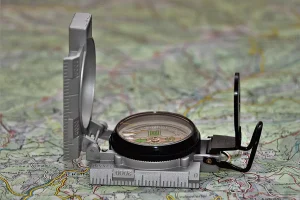
Score orienteering is a format in which control points have varying point values, and participants must decide which ones to visit within a set time limit.
The goal is to maximize the total points collected while managing time constraints.
Pros of Score Orienteering:
- Emphasizes strategic decision-making and time management skills
- Can be tailored to different skill levels and abilities
- Encourages participants to think creatively and assess risks
Cons of Score Orienteering:
- May be more challenging for beginners due to increased decision-making complexity
- The competitive aspect can be less focused on navigation and more on strategy
7. Night Orienteering

Night orienteering is a variation of the sport that takes place after dark, adding an extra layer of challenge to the navigation process.
Participants use headlamps or flashlights to navigate their way through the course, relying on limited visibility and heightened senses.
Pros of Night Orienteering:
- Enhances the navigational challenge and difficulty level
- Appeals to experienced orienteers seeking new experiences
- Develops nighttime navigation skills and confidence
Cons:
- Requires additional safety precautions and equipment
- Limited visibility can make it more difficult for beginners
- May be less accessible due to limited events and specific conditions required
8. Indoor Orienteering

Indoor orienteering takes place within large indoor venues such as sports halls, shopping centers, or other complex structures.
The focus is on navigating through a maze-like environment, with participants required to find their way through corridors, staircases, and rooms.
Pros of Night Orienteering:
- Provides a unique and challenging environment for navigation
- Weather-independent, allowing for year-round participation
- Suitable for all ages and skill levels
Cons of Night Orienteering:
- Limited availability of suitable venues and events
- May lack the natural and outdoor elements of traditional orienteering
- Smaller-scale courses can be less challenging for experienced orienteers
These are some of the primary variations and types of orienteering and each type offers unique challenges and experiences, caters to different interests, skill levels, and preferences.
How to get started in orienteering
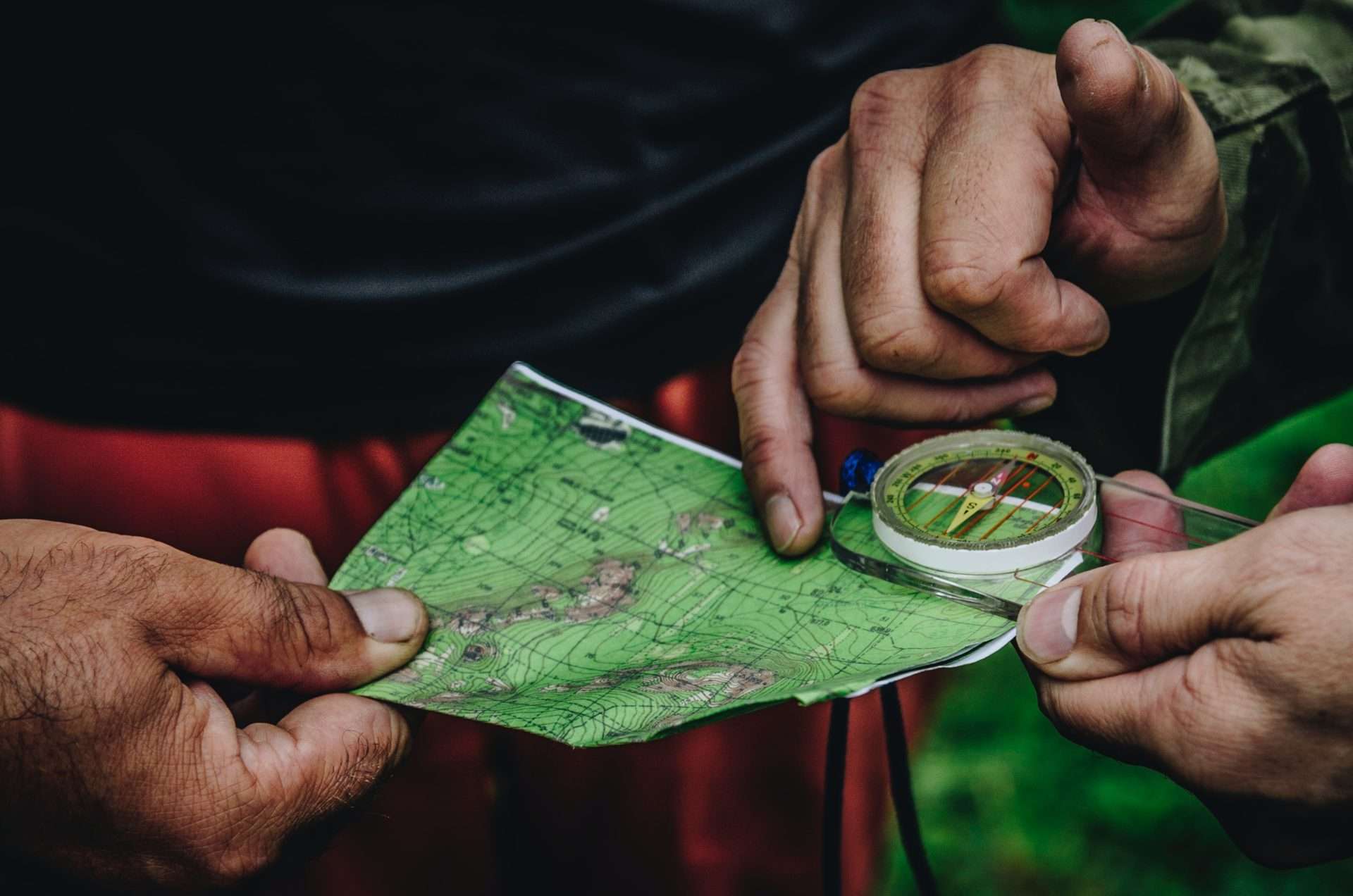
So, we’ve answered “What is Orienteering”, now let’s started! Here are some steps to guide you through the process:
-
Learn the basics
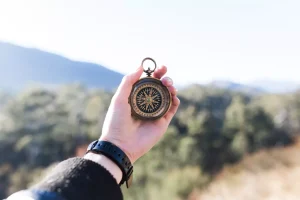
Familiarize yourself with the essential concepts, skills, and equipment needed for orienteering.
You can find resources online, such as articles, videos, or tutorials, or consider taking a course or workshop offered by a local orienteering club or outdoor education center.
-
Find a local club
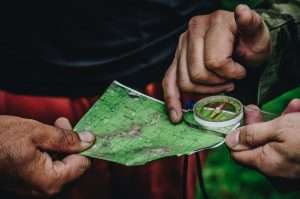
Joining a local orienteering club is an excellent way to access resources, meet like-minded individuals, and participate in organized events.
Clubs often provide training, maps, and support for beginners. Search online or consult the website of your country’s orienteering federation to find a club near you.
-
Attend an event
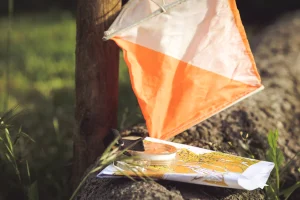
Participate in an orienteering event or competition organized by a local club or organization. Beginner-friendly events are often available, and you can choose a course that matches your skill level.
These events are an excellent opportunity to practice your skills, meet other orienteers, and learn from experienced participants.
-
Practice and improve

Regularly practice your orienteering skills, such as map reading, compass use, and route planning, to become more proficient.
Participate in different types of orienteering events and continue to try new skills.
-
Get involved

Volunteering or contributing to your local orienteering community is a great way to give back, learn more about the sport, and connect with others.
You might assist with event organization, course setting, or coaching and mentoring new participants.
Tools:
- Compass
- Map
- Good hiking clothing and footwear
Try Orienteering
As mentioned earlier, orienteering is a navigational sport where participants use a detailed map and a compass to find their way through a pre-defined course.
The objective to orienteering is to locate a series of control points marked on the map in the fastest time possible.
It combines mental and physical challenges, making it an enjoyable sport for people of all ages and fitness levels.
So, let’s find what we need to get started!
orienteering equipment

To get started with orienteering, you’ll need the following basic equipment:
1. Orienteering Map
A detailed topographical map specifically designed for orienteering, showing control points, terrain features, and other essential information.
Maps are typically provided by event organizers or can be obtained from local orienteering clubs or online retailers.
2. Orienteering Compass
A reliable compass suitable for orienteering, such as a baseplate or thumb compass. Baseplate compasses have a transparent base with a rotating bezel, while thumb compasses are designed to be worn on the thumb for quick and easy use.
3. Comfortable clothing
Choose clothing that is suitable for the weather conditions and allows for ease of movement. Moisture-wicking materials are recommended to keep you dry and comfortable.
Dress in layers to adapt to changing temperatures and wear long sleeves and pants to protect against scratches and insect bites.
4. Footwear
Select appropriate footwear based on the terrain and weather conditions.
Trail running shoes offer a good balance between traction and lightweight design, while hiking boots provide more ankle support and protection on rough terrain.
Waterproof shoes or boots can be helpful in wet conditions.
Orienteering skills & techniques

To excel in this fun hobby, you’ll need to master a range of skills and techniques:
Map reading
Understand map symbols, colors, and contours to interpret the terrain accurately. Learn to quickly identify features such as trails, water bodies, and elevation changes.
Practice reading maps at home or during training sessions to improve your skills.
Compass use
Learn to use a compass for navigation, taking bearings, and measuring distances.
Become familiar with the different parts of a compass, such as the needle, rotating bezel, and baseplate. Practice aligning the compass with the map and following a bearing in the field.
Route planning
Develop the ability to choose the best route between control points, considering factors like terrain, distance, and your physical abilities.
Analyze the map and identify potential obstacles, such as steep slopes or dense vegetation. Learn to balance speed and safety while navigating the course.
Pace counting
Estimate the distance traveled by counting your steps or using a distance measuring device. This skill can help you gauge your progress and make better decisions about route choices.
Develop a consistent stride and practice counting steps over known distances to improve accuracy.
Time management
Balance speed and accuracy to complete the course in the shortest time possible. Learn to prioritize control points and make quick decisions about route choices. Develop a strategy for managing fatigue and maintaining focus throughout the event.
How to design an orienteering course

Designing an orienteering course can be a fun and engaging activity. Here are the basic steps to create a course:
Choose a suitable location
Select an area with varied terrain and interesting features, such as a park, forest, or urban setting. Consider factors like safety, accessibility, and permission from landowners or local authorities when choosing a location.
Obtain or create a map
Obtain an orienteering map of the area or create one using mapping software or online resources. Maps should be accurate, up-to-date, and clearly show terrain features, control points, and other essential information.
Plan the course
Determine the starting point, control points, and finish line. Ensure the course is suitable for the intended participants in terms of difficulty and distance. Consider creating multiple courses with varying levels of difficulty to accommodate different skill levels.
Mark the control points
Place control markers or flags at the designated control points, ensuring they are visible and match the map. The markers should include a unique identification code and a punch or electronic device to record participants’ visits.
Test the course
Walk or run through the course to ensure it is accurate, challenging, and enjoyable for participants. Make any necessary adjustments to the course layout, control points, or map based on your experience.
Orienteering benefits
Orienteering offers a range of physical, mental, and social benefits that make it a rewarding and enjoyable activity for people of all ages and skill levels.

Here are some of the top benefits of participating in orienteering:
1. It’s Good Exercise
Orienteering provides a full-body workout, engaging various muscle groups as you traverse different terrains.
It improves cardiovascular fitness, builds strength, and enhances flexibility, making it an excellent way to stay active and healthy.
2. It’s a Fun Mental Challenge
Orienteering is not only physically demanding but also mentally stimulating.
Navigating through a course requires concentration, decision-making, and problem-solving skills, leading to improved cognitive abilities and mental resilience.
3. It Connects You with Nature

As an outdoor sport, orienteering allows participants to explore and connect with nature. It encourages an appreciation for the environment and fosters a sense of responsibility towards preserving natural habitats.
4. It provides Stress Relief
Spending time outdoors and engaging in physical activity are proven ways to reduce stress and promote relaxation.
Orienteering provides an opportunity to disconnect from daily stresses and focus on the present moment, leading to improved mental well-being.
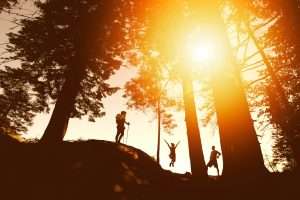
5. It provides Social Interactions
Orienteering events bring together people with diverse backgrounds, ages, and skill levels. Participants can interact, share experiences, and develop lasting friendships, making orienteering an excellent way to forge new connections and strengthen social bonds.
6. It Improves Navigational Skills
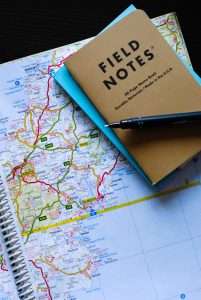
Mastering map reading and compass use is a vital aspect of orienteering.
These skills can prove invaluable in everyday life and other outdoor activities, such as hiking, camping, or even navigating unfamiliar urban environments.
7. I can Build Confidence & Independence
Successfully completing an orienteering course can boost self-esteem and foster a sense of accomplishment.
As participants hone their navigation skills and overcome challenges, they develop confidence and independence that can carry over into other aspects of life.
These are just a few of the many benefits associated with orienteering, making it a versatile and enriching sport that caters to a wide range of interests and abilities.
Frequently Asked Questions (FAQ’s) about Orienteering

What is orienteering all about?
Orienteering is a sport that involves navigating through a course using a map and compass to find a series of control points.
It can be practiced in various environments and formats, such as foot, urban, mountain bike, or ski orienteering. The sport combines physical fitness, mental challenges, and outdoor adventure.
What are the benefits of Orienteering?
Learning orienteering can improve your map reading, compass use, and navigation skills, which can be useful in various outdoor activities like hiking, backpacking, or adventure racing.
Additionally, orienteering promotes physical fitness, problem-solving, and a deeper appreciation for the natural environment.
What are Orienteering Aids?
Orienteering aids are tools or resources that assist in the practice of orienteering.
These may include electronic devices like GPS watches, smartphone apps, or online resources like tutorials and course planning software.
While these aids can be helpful, it is important to maintain core orienteering skills like map reading and compass use.
Is orienteering suitable for all ages & fitness levels?
Yes, orienteering is a versatile sport that can be enjoyed by people of all ages and fitness levels. Courses can be tailored to suit different skill levels, from beginner to advanced, and can be completed at a leisurely pace or as a competitive race.
Many orienteering clubs also offer family-friendly events and activities designed specifically for children and beginners.
Can I practice orienteering alone or with friends?
While participating in organized events is a great way to learn and enjoy orienteering, you can also practice the sport independently or with friends.
Design your course using a local map, set up control points, and take turns navigating the course.
This can be an enjoyable and educational activity for groups, families, or individuals looking for a unique outdoor challenge.
What are some safety tips for orienteering?
When participating in orienteering, keep the following safety tips in mind:
*Always carry a whistle to signal for help in case of an emergency.
*Inform someone of your intended route and estimated return time.
*Dress appropriately for the weather conditions and terrain.
*Carry a small first aid kit and know how to use it.
*Stay aware of your surroundings and potential hazards, such as wildlife, changing weather, or difficult terrain.
*If you become lost or disoriented, stop and retrace your steps to a known location or follow a linear feature like a trail or stream until you regain your bearings.
Orienteering Resources

Hey Everyone!
Chritt here. I just want to say THANK YOU SO MUCH for visiting Boredom Busted. It’s been my passion project going on 7 years now.
I need a favor though. If you have found the page you landed on or explored useful in any ways – please please please share, or comment.
The more engagement on this page – the more I can continue to write and provide helpful content to my visitors like you.
I love you all and thank you again for visiting! Don’t be a stranger and hope to see you back, soon!

